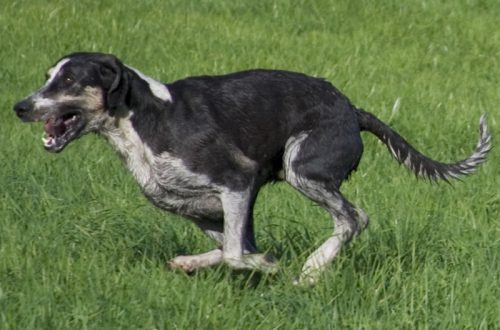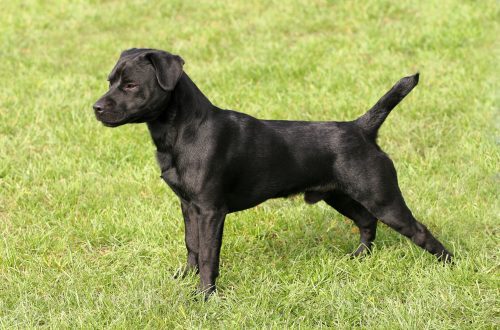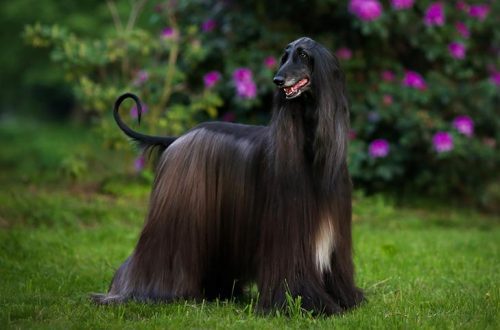
Miniature Pinscher
Other names: Zwergpinscher, and Min Pin
The miniature pinscher is a miniature, but very strongly built handsome man, energetic, fearless and self-confident. He is emotional, affectionate and extremely sociable.
Contents
- Characteristics of Miniature Pinscher
- Basic moments
- History of the miniature pinscher breed
- Video: Miniature Pinscher
- The appearance of the miniature pinscher
- Photo of a miniature pinscher
- The nature of the miniature pinscher
- Education and training
- Care and maintenance
- Miniature Pinscher health and disease
- How to choose a puppy
- Photos of miniature pinscher puppies
- How much does a miniature pinscher cost
Characteristics of Miniature Pinscher
| Country of origin | Germany |
| The size | Small |
| Growth | 25.5-30.5 cm |
| Weight | 2.5–4 kg |
| Age | about 16 years old |
| FCI breed group | Pinschers and Schnauzers, Molossians, Swiss Mountain and Cattle Dogs |
Basic moments
- The miniature pinscher is an active, noisy and reckless dog, always ready for an adventure.
- This breed is distinguished by high intelligence, ingenuity, cunning, and the ability to manipulate its owners if they allow it.
- It needs training and strict upbringing, otherwise it turns everything around it into chaos.
- Despite excessive briskness, it has a stable nervous system.
- The miniature pinscher is incredibly self-confident and prone to dominance.
- A great companion, selflessly devoted to the owner.
- Gets along well with older children, but is an inappropriate company for an unintelligent kid, as he can respond to careless acts towards himself with aggression.
- With other pets, except for hamsters and birds, the dog gets along well if he grew up among them from puppyhood. In other cases, treat them selectively. Very unfriendly to unfamiliar cats.
- The miniature pinscher is a thunderstorm of rats and mice; rodents that exceed it in size can also become its victims.
- It is hardy and needs physical activity, so it is easier to keep it for people who prefer an active lifestyle.
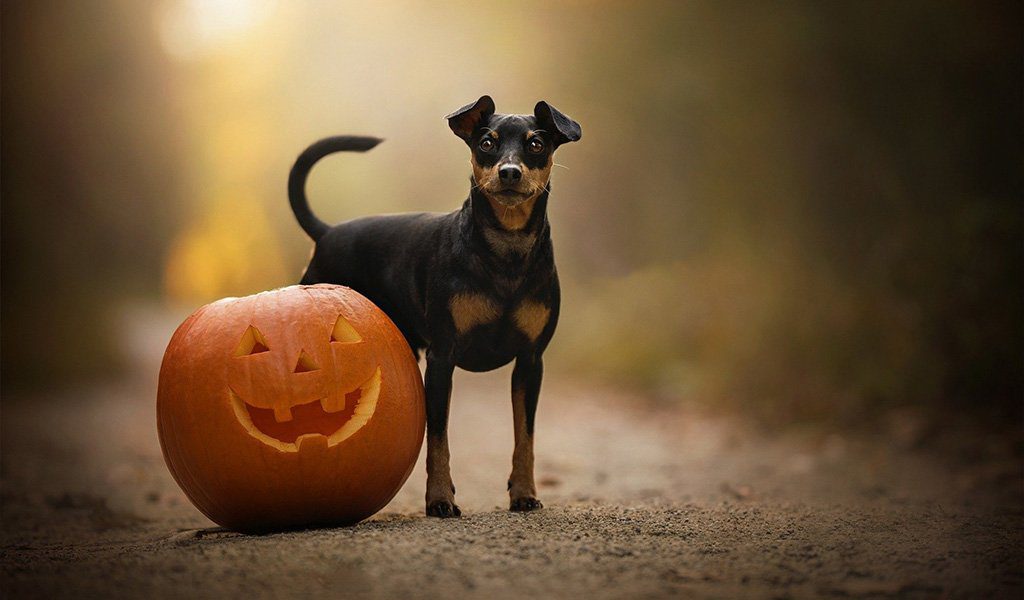
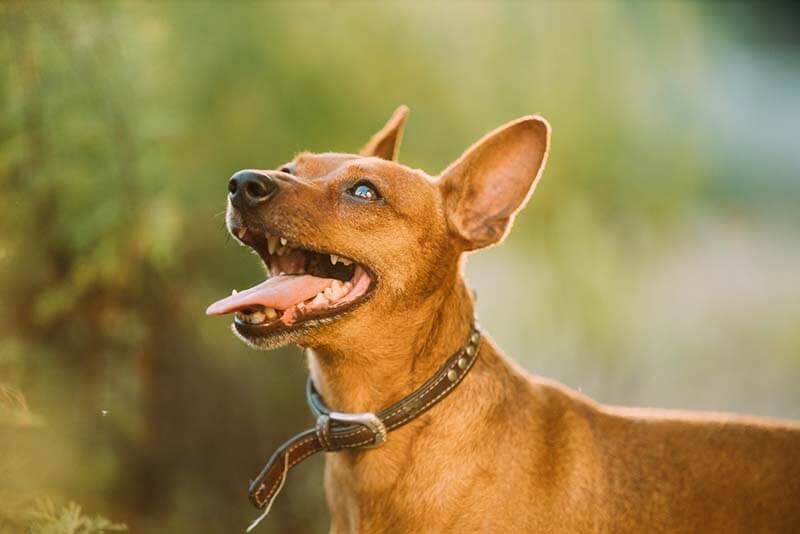
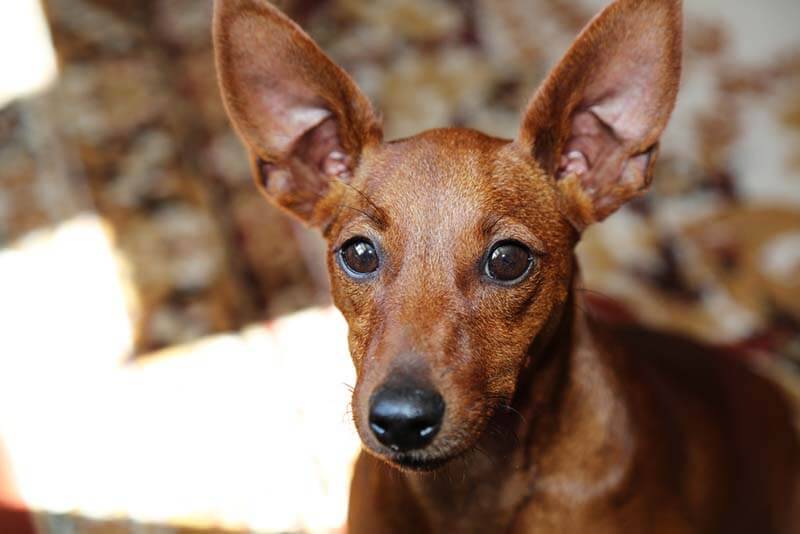
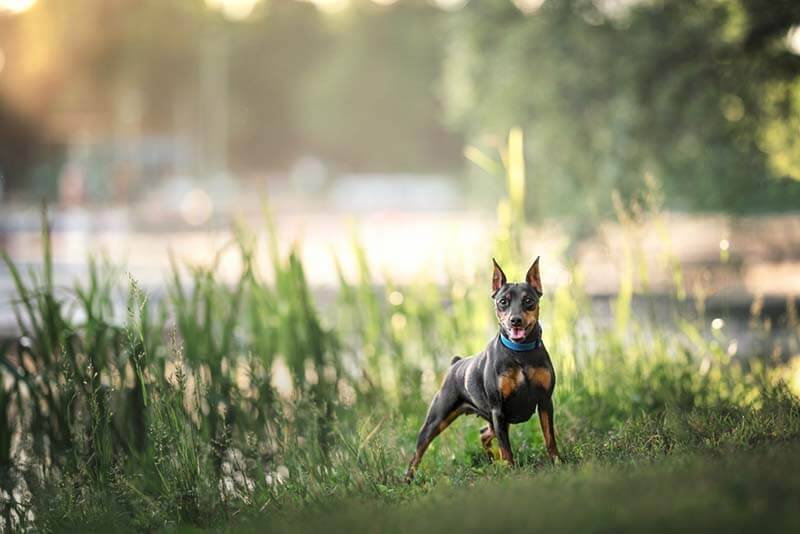
The miniature pinscher with its spectacular appearance of a smart-ass aristocrat is a bright personality. Frisky, impetuous, cheerful, prone to inventions and tricks, he knows how to brighten up everyday life, and does not let anyone get bored. His seething energy does not overshadow, however, the power of the mind: he is not one of those who recklessly enter the tiger’s cage – if the dog wants to annoy the enemy, who is physically superior to him, he will certainly invent some sophisticated method and achieve his goal. If he has to submit, he will do it with unsurpassed dignity, while maintaining his fantastic conceit.
History of the miniature pinscher breed
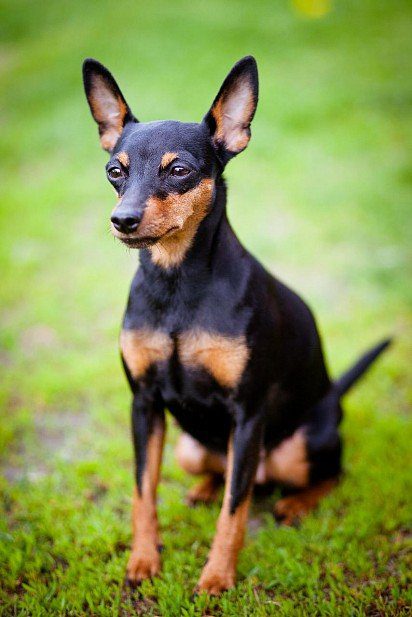
The Miniature Pinscher, also known as the Miniature or Miniature Pinscher, is a breed that began at least two centuries ago in Germany. Experts do not doubt the fact that the dominant role in the breeding of the breed belonged to the short-haired German Pinscher – dogs known in Europe since the Middle Ages. They were famous for their unpretentiousness in keeping and their versatility: they served as watchmen on farms, had the fame of excellent hunters and dexterous rodent exterminators. In addition to the German Pinscher, among the distant ancestors of the Miniature Pinscher, dachshunds and Italian greyhounds are also called – the shortest dogs of their greyhound group.
It is known that at the beginning of the 19th century, the growth of a standard pinscher was from 45 to 50 cm at the withers, and their miniature varieties, which already in 1936 were called dwarf smooth-haired pinschers, were characterized by a height of 35 to 40 cm.
In the second half of the 19th century, targeted selection of pinschers began, and in 1880 the first official breed standard developed by the German cynologist Richard Strebel appeared. Five years later, the German breeder Joseph Berta founded the Pinscher Club, under the auspices of which the division of pinschers of different exterior into separate breeds took place.
Miniature Pinschers were first shown at the Stuttgart Dog Show in Germany in 1900. At that time, outside of their homeland, these dogs, nicknamed for their small stature miniature pinschers (“zwerg” in German means “dwarf”), were practically unknown. However, over time, the breed began to gain popularity both throughout Europe and overseas. In 1905, the first Miniature Pinscher was registered in the French Stud Book. True, he was characterized as a German smooth-haired terrier. In the United States, where the Miniature Pinscher began to be imported after the First World War, the breed was also originally included in the Terrier category. In 1929, when the American Kennel Club (AKC) officially approved the Pinscher breed, the Miniature Pinscher Club was created, whose members petitioned that so that the AKC identifies their smallest type in the “pinscher (toy)” group. In 1972, this name was changed to “miniature pinscher”.
Today, this small but brave dog has a lot of fans in all corners of the planet. In different countries, in everyday life and when selling it, it is often called differently, however, since 1955, in the breed classification of the International Cynological Organization (FCI), the smallest representative of the pinscher is called the miniature pinscher.
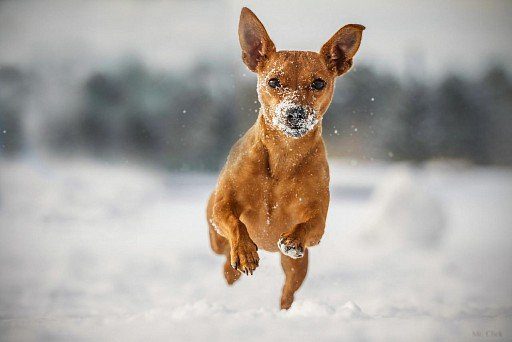
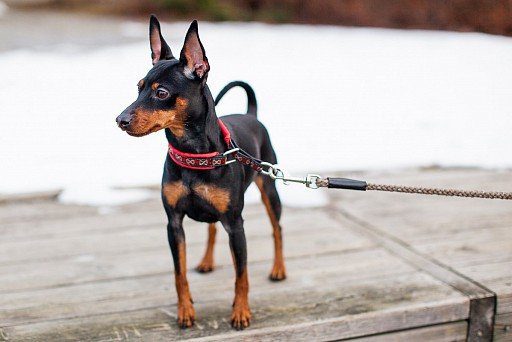
Video: Miniature Pinscher
The appearance of the miniature pinscher
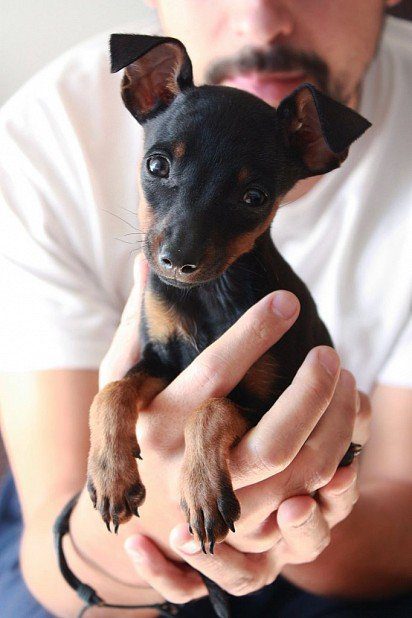
Today, at international exhibitions, you can see miniature pinschers belonging to different intrabreed types. This is due to the fact that the breeding of these dogs in many countries is based on their own traditions in the selection of this breed. So, dogs bred in the USA, Great Britain, Canada are characterized by a special, graceful manner of movement. Miniature Pinschers originally from Israel are distinguished by an almost absolute external resemblance to miniature Dobermans , confident wide, sweeping movements are inherent in them. German natives can always be recognized due to their stockiness and muscularity, and representatives of Scandinavia are the most balanced, calm and self-confident individuals. However, for all miniature pinschers, rigid growth limits (25-30 cm), colors, and a certain structure of the body are established.
Frame
The miniature pinscher is distinguished by high legs, but the well-developed withers, which is the highest point of the topline, gives its body depth, so the dog does not look upturned on its feet. The line of the back is slightly sloping from the withers to the base of the tail. The chest is rather wide, has an oval shape, its front part expressively protrudes forward. A short, elastic and strong back, a strong and also short loin give the miniature pinscher a compact appearance, while its body looks almost square.
Head
The head of the dog is proportional to the body, has the shape of a blunt wedge. The transition from the forehead to the muzzle is clearly defined, but not sharp. The muzzle itself is slightly shorter than the skull, which is strong, oblong in shape. The bridge of the nose is straight. The nose is painted black, the nostrils are well developed. Lips dry, smooth, black. They fit snugly to the jaws, their corners are closed.
Jaws and teeth
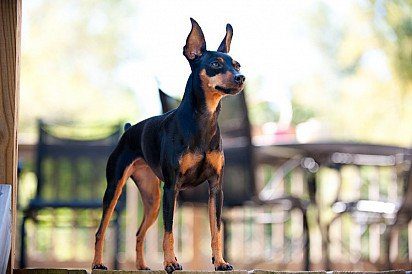
The jaws of the miniature pinscher are strong, the teeth are white, strong, the bite is scissor-like, closing tightly and firmly. Chewing muscles are well developed.
Ears
The ears of the miniature pinscher are set high. Standing or hanging on cartilage, they are triangular (V-shaped) in shape. The inner edges of the hanging ears should be close to the cheekbones. The standard does not say that cropped ears are a fault of the breed, however, in countries where there is a ban on ear cropping, dogs subjected to this procedure are not allowed to participate in exhibitions and championships.
Eyes
Small in size, oval in shape, their color is dark brown. The black eyelids fit snugly against the eyeball.
Neck
This part of the dog’s body is characterized as dry, without dewlap, slightly elongated. It is nobly curved, which emphasizes the proud character of the miniature pinscher.
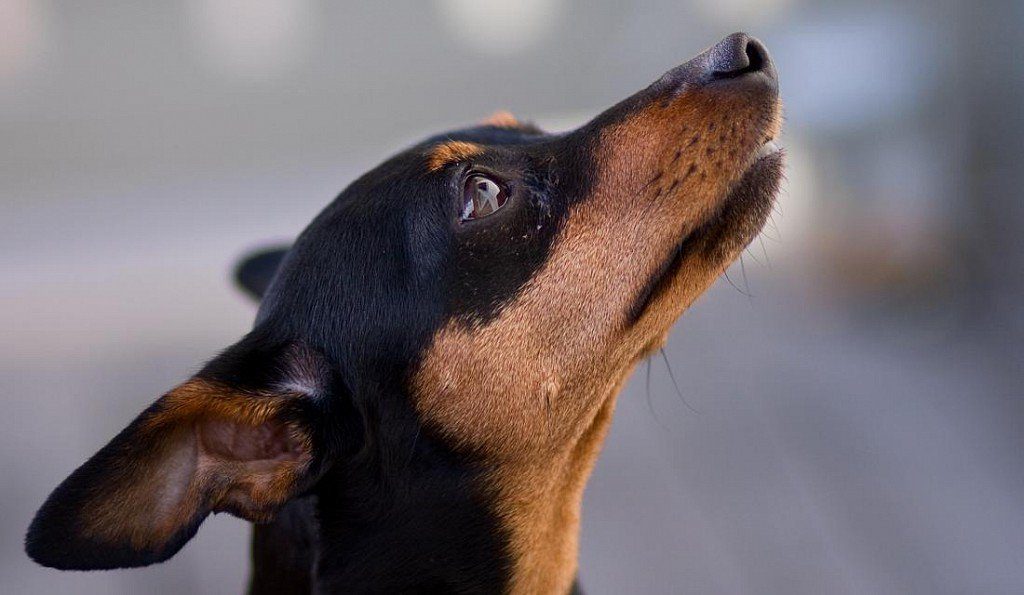
Tail
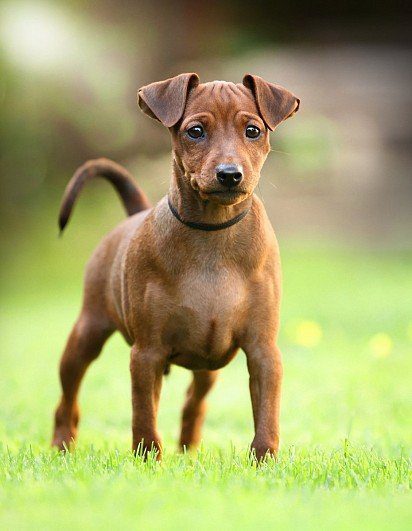
The tail of the Miniature Pinscher is set high but cannot be directed towards the head. At shows, judges tend to give preference to dogs whose tails are saber-shaped or sickle-shaped.
limbs
They are characterized by distinctly expressed angles of all joints and a moderately wide set. Forelegs in full face and in profile look straight. The forearms are well developed, muscular, the wrists and pasterns are strong, strong, elastic. The hind limbs when viewed from the side look slightly set aside, when viewed from behind – parallel to each other. The thighs are wide enough, with well-developed muscles. The legs are long and strong. The paws of the miniature pinscher are rounded, the fingers are closed, the claws are short, strong, painted black. The hind legs are slightly longer than the front.
Traffic
The miniature pinscher moves with energy, demonstrating confidence and strength. It is characterized by a free, sweeping trot with a strong push and a wide reach of the forelimbs. During the movement, the dog balances, its back remains even and stable.
In countries such as the USA, Great Britain, Canada, the most important natural feature of the miniature pinscher breed is its prancing gait (hackney-gait). This specific feature is characterized by the fact that the dog seems to be drumming with its forelimbs in the air. This gait appears only when the angle of the shoulder is straightened, as a result of which the step of the forelegs becomes much shorter than the step of the hind limbs, which forces the dog to raise the front legs high in movement in order not to step on them with the hind legs.
But the FCI standards do not recognize this kind of movement and attribute it to the vices of the breed.
Wool
Miniature Pinscher – the owner of a thick, shiny, smooth coat. Bald patches are not allowed.
Color
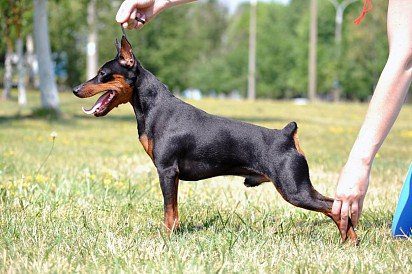
Today, the FCI standard allows only two colors of the Miniature Pinscher: fawn or fawn-red (from reddish brown to dark red-brown) and black and tan (lacquer black with red or brown markings). Burn marks should be intensely dark, distinctly defined. They should be distributed in a certain way: above the eyes, in the lower part of the throat, on the metacarpus and paws, on the inside of the hind limbs, under the base of the tail. Two identical, well-defined tan marks in the shape of a triangle should be located on the dog’s chest.
American and Canadian cynological organizations also recognize other colors of miniature pinschers: chocolate, blue, isabella and tan.
Disadvantages of the breed
- Too heavy or, on the contrary, too graceful physique.
- Long, soft or humped back.
- Short-legged or excessively high-legged, protruding inward or outward elbow joints.
- Wrinkled skin on the forehead.
- Shortened or pointed, too narrow muzzle.
- Excessively small or too large eyes, their light color.
- Long or low set ears.
- Rare wool.
Photo of a miniature pinscher
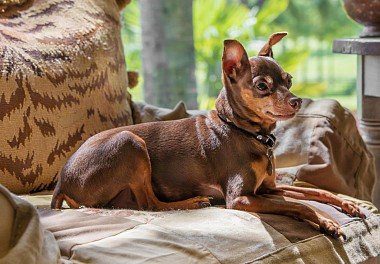
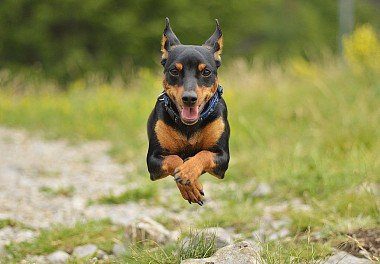
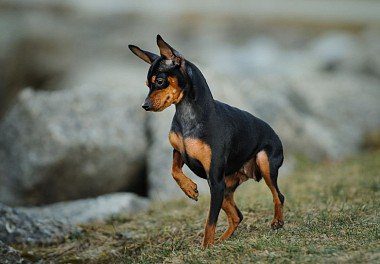
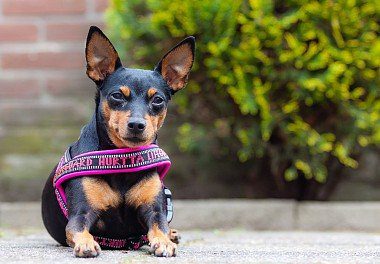
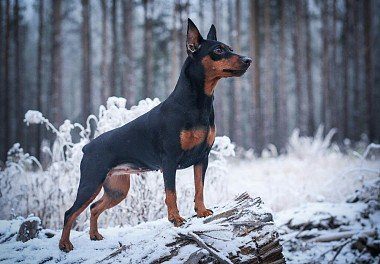
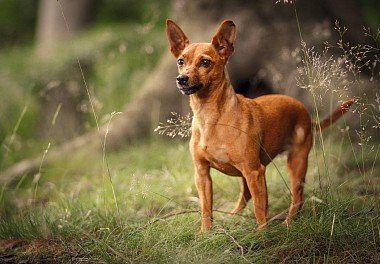
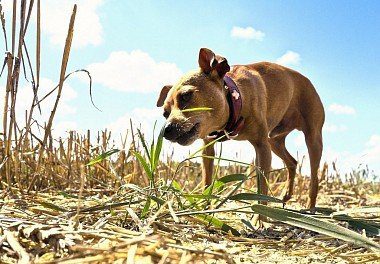
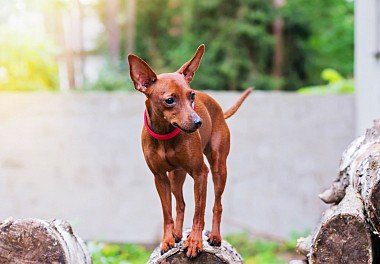

The nature of the miniature pinscher
The miniature pinscher is not at all worried about his small size – he is so self-confident and courageous. Incredible aplomb and energy, combined with intelligence and cunning, allow this kid to become a key participant in all the events taking place around him – at home, on the street, at an exhibition, that is, everywhere.
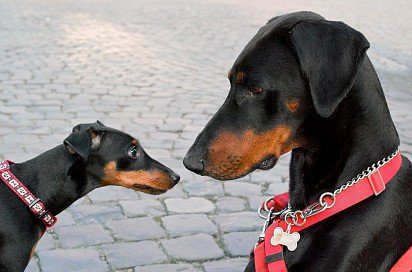
The miniature pinscher shows his love and devotion to the owner very emotionally, while preferring to feel on an equal footing with him. This dog needs a “firm hand”, otherwise it will certainly manifest an innate passion for dominance and manipulation. If this cunning irrepressible imp understands that, by putting on a plaintive look, he can get everything he wants, then there will be no limit to his folly. This dog will demonstrate the desire to occupy the highest possible position at every opportunity, both in relations with people and when communicating with his fellow tribesmen, even the largest of them. To avoid problems, the miniature pinscher must be taken for a walk on a leash.
The dog is aggressive in relation to small animals, especially rodents, birds, he does not favor cats either. Peaceful coexistence between miniature pinschers and representatives of the cat family is possible only if pets were brought up together from a tender age.
Incredibly agile, with excellent grip, strong teeth and lightning-fast reaction, the miniature pinscher feels like a protector of the family and a watchman. If someone decides to harm his owners, the dog will rush to the potential enemy before he has time to carry out his plan. At the same time, the nervous system of the miniature pinscher is strong, and his courage is not reckless – he always soberly assesses the situation and his strength.
The miniature pinscher is constantly overwhelmed with a thirst for activity, he is incredibly inquisitive, inventive, observant and, like a detective, always ready to investigate. If the dog wishes to make some kind of undertaking, then he will find a way to escape from anywhere, overcoming all obstacles in an unimaginable way. He can easily climb onto a table, window sill, climb into the narrowest gap. His antics amaze with their creativity, and the ability to perform various dizzying tricks suggests that he clearly likes the role of a clown: laughter and attention from household members is a true reward for him.
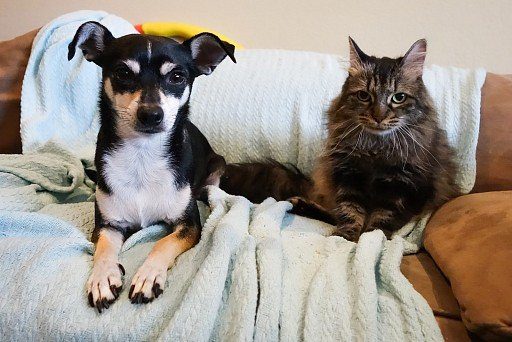
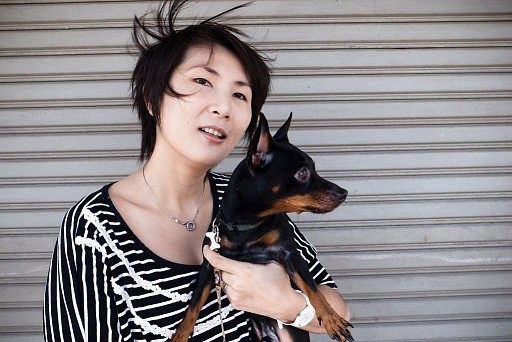
Education and training
Endowed with intelligence and ingenuity, the miniature pinscher lends itself well to training. However, the owner must take the upbringing of the pet with all seriousness, given the characteristic features of this breed: the dog will not miss the opportunity to imperceptibly establish its own control over the training process if the owner makes even the slightest mistake. The manifestation of excessive love and forgiveness when raising a miniature pinscher is unacceptable, as well as rudeness, however.
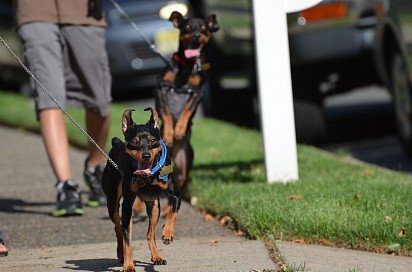
The training methodology should be based on the principles of consistency and repetition, so training the Miniature Pinscher in discipline, obedience and good tone takes more time than working with most other breeds. The dog must understand that the owner is calm, self-confident and firm in his intention to accustom him to order – in this case, with the zeal of a true careerist, he will begin to demonstrate his readiness to serve and carry out commands.
The miniature pinscher masters shells on the training ground with stunning agility and speed, and it is not difficult for him to overcome an obstacle five times his height from the spot. Such abilities, combined with excellent maneuverability, make the Miniature Pinscher one of the best breeds demonstrating outstanding success in agility.
Care and maintenance
The miniature pinscher is a companion dog, so he must certainly live under the same roof with his owner, keeping an animal in an aviary is absolutely unacceptable. The dog himself will feel great both in a city apartment, even a small one, and in a country house: he will always figure out what to do with himself and will not be bored. Miniature Pinscher owners should understand that their indefatigable pet should be able to realize their activity. Otherwise, his energy will take on destructive forms, and you can forget about the calm atmosphere in the house. The “city dweller” dog needs to be walked at least three times a day, and it is desirable that he has the opportunity to frolic without a leash in some suitable place.
When walking a miniature pinscher in bad weather, the owner must take into account some points. Frosts, for example, are not terrible for this short-haired dog, but on condition that it is constantly in motion. But if during a walk the dog catches cold rain or sleet, you need to take it in your arms, cover it with whatever you have to, take it home and dry it well, otherwise it can not only catch a cold, but also get a disease of the kidneys and genitals. Caring owners, as a rule, purchase seasonal clothes for their miniature pets – waterproof and windproof overalls.
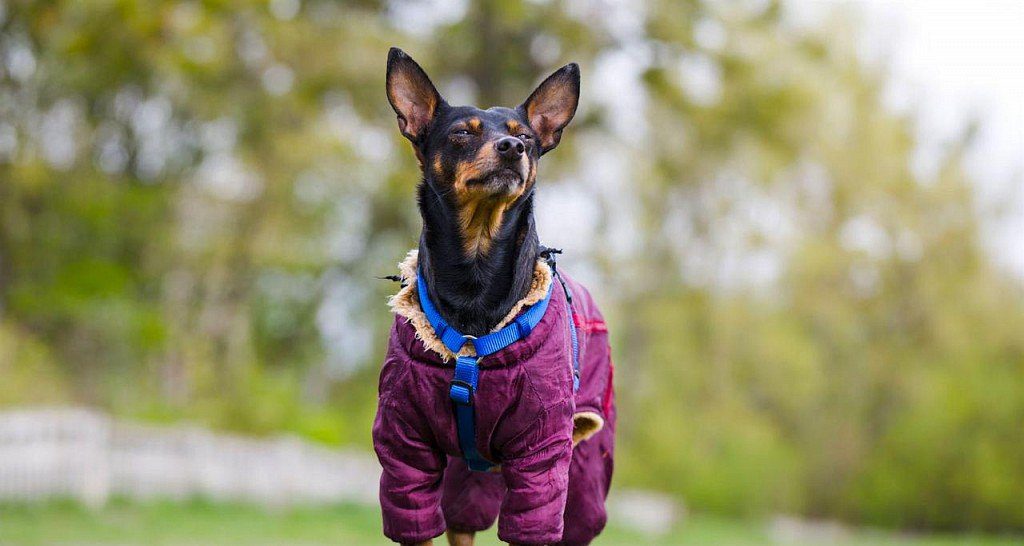
Despite the fact that miniature pinschers shed periodically, caring for their coat will not become burdensome. It is enough to prophylactically comb the dog once a week with a special soft brush for smooth-haired dogs, it will not be superfluous to periodically wipe his coat with a damp natural cloth. A general wash can be arranged for a pet if it gets pretty dirty in its adventures.
Dogs need to brush their teeth two or three times a week, and trim their nails once or twice a month.
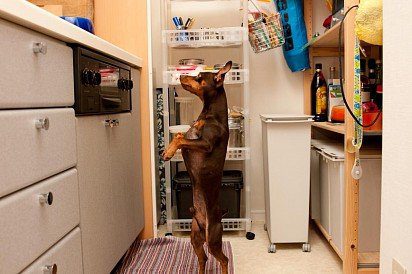
The miniature pinscher’s appetite is quite moderate, but in the cold winter season, the dog, as a rule, begins to show remarkable interest in food, because it needs more energy. During this period, many dogs gain excess weight, which is highly undesirable. Owners should not change their pet’s usual diet, but adding foods with a high protein content to it would be quite appropriate.
An adult Miniature Pinscher should be fed twice a day, preferably at the same time. If you prefer to buy natural products for your pet, please note that at least 40% of their volume should be meat. Choose beef and horse meat, poultry meat is more suitable for puppies. It is desirable to combine meat products with cereals: oats, millet, buckwheat. Make sure there is always water in the dog bowl. Don’t forget about plant foods. Vegetables can be steamed and made into a salad dressed with low-fat sour cream or sunflower oil.
From ready-made foods, choose a premium or super-premium product designed specifically for small breed dogs.
Miniature Pinscher health and disease
Miniature Pinschers are distinguished by good health, but this breed still has a tendency to certain diseases. Among them:
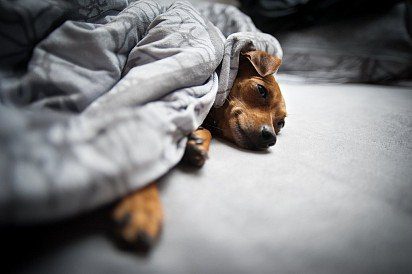
- progressive retinal atrophy, leading to a gradual deterioration and even complete loss of vision;
- Perthes disease, or osteochondropathy of the femoral head, the first symptoms of which (lameness, muscle atrophy) can appear in puppies at 4-6 months of age;
- epilepsy – a neurological condition resulting in mild or severe seizures when the dog behaves inappropriately;
- hypothyroidism – a violation of hormonal metabolism, leading to pathologies such as alopecia (hair loss), obesity, lethargy, hyperpigmentation, pyoderma;
- Congenital or acquired luxation of the patella is a very common ailment among all small breeds of dogs.
How to choose a puppy
An excellent livestock of miniature pinschers has been bred in Russia, among which there are European and world champions, winners of major international exhibitions. Finding a decent nursery where you can buy a 100% thoroughbred puppy, equipped with the necessary documents, is not difficult.
When choosing a baby, pay attention to how all the puppies belonging to the same litter behave, how they play with each other, how their mother treats them. Take a closer look at the bitch: a well-groomed, healthy, attentive mother and children are appropriate, and if she is sad, emaciated, has a painful appearance, then her babies are likely to be weakened. Watch the puppies feed: healthy puppies show great appetite. Among the cheerful company of brothers and sisters, choose an active, but not aggressive strong man, he must be curious and ready to communicate with you.
You should check the bite of the miniature pinscher baby, assess the condition of his teeth, the cleanliness of his eyes, make sure that the dog has clean ears without discharge that exudes an unpleasant odor. The coat of your chosen one should be beautiful, smooth, shiny, without bald spots and dandruff. Light scratches on the puppy’s body should not scare you – most likely, these are the consequences of games, because miniature pinschers demonstrate their temperament from the most tender age.
Photos of miniature pinscher puppies
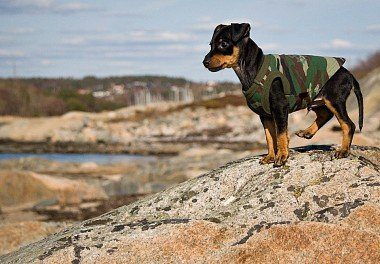
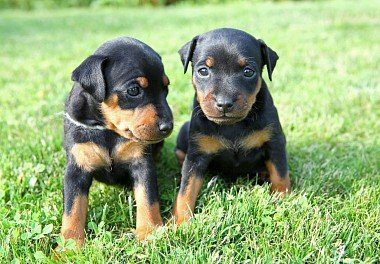
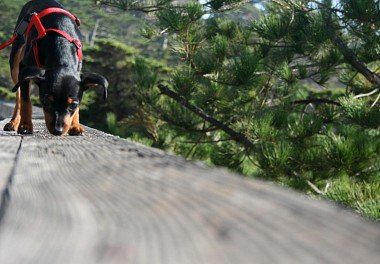
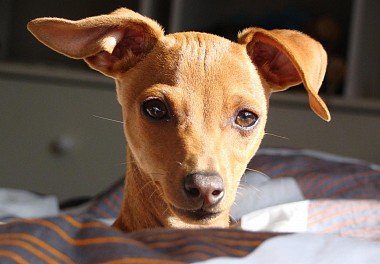
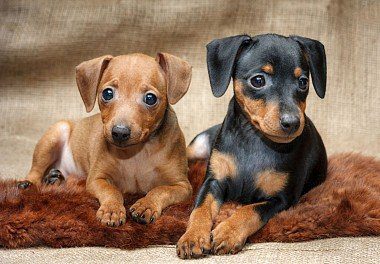

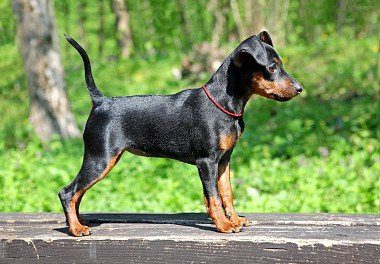
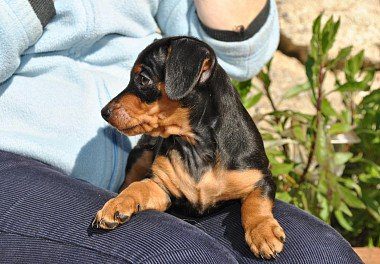
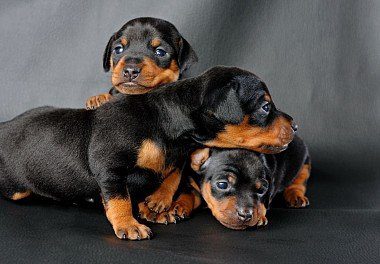
How much does a miniature pinscher cost
To date, the price of miniature pinscher puppies varies from 150 to 500$. If dogs are sold at a lower price, this means that they do not have a pedigree or belong to a breeding marriage.
Purebred healthy puppies with all the necessary documents, but without obvious exhibition prospects, cost from 150 to 350$. The offspring of champion parents, who are predicted by breeders for a brilliant show career, will cost more.



